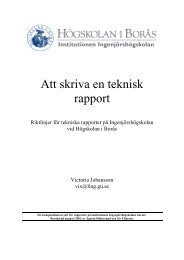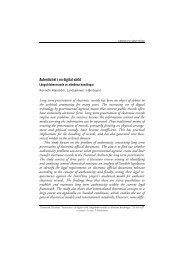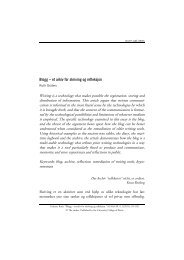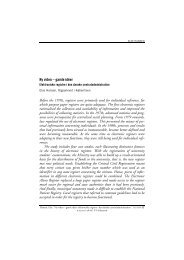The Challenge of Managing Affordances in Computer Game Play
The Challenge of Managing Affordances in Computer Game Play
The Challenge of Managing Affordances in Computer Game Play
You also want an ePaper? Increase the reach of your titles
YUMPU automatically turns print PDFs into web optimized ePapers that Google loves.
HUMAN IT REFEREED SECTION<br />
manner as <strong>in</strong> the real world; <strong>in</strong>stead they are passed through by just<br />
walk<strong>in</strong>g <strong>in</strong>to them (if it is a door that can be passed through), and she<br />
also knows that <strong>in</strong> order to do so, she needs to keep push<strong>in</strong>g the button<br />
that makes Guybrush move (<strong>in</strong> this case the avatar is controlled through<br />
a keyboard). However, the button (<strong>in</strong> fact, all buttons) affords push<strong>in</strong>g at<br />
any time, and there is noth<strong>in</strong>g, no perceptible <strong>in</strong>formation on the door<br />
or any other part <strong>of</strong> the virtual game environment, that “affords” to<br />
push, or keep push<strong>in</strong>g, a button outside <strong>of</strong> the virtual game environment;<br />
neither when she wants to approach the door, nor at any other specific<br />
po<strong>in</strong>t <strong>in</strong> time. To expla<strong>in</strong> how she actually knows she needs to push a<br />
button requires a conception other than affordance, but for now let us<br />
just go with the fact that she keeps push<strong>in</strong>g a button to pass through the<br />
door. We will return to this issue later, and <strong>in</strong> the meanwhile, we denote<br />
this “affordance-action gap” with a [ * ], also when it occurs <strong>in</strong> the follow<strong>in</strong>g<br />
examples. What we do know, however, is that while the player plays<br />
the game, she temporarily attaches an object (the keyboard) to her body,<br />
and thereby extends her action capabilities. In other words, the attachment<br />
<strong>of</strong> this specific object allows her to “reach” <strong>in</strong>to the virtual world –<br />
but it still does not expla<strong>in</strong> why, or what affords the push<strong>in</strong>g <strong>of</strong> the button.<br />
[ * ] She walks towards the door, and “bumps” <strong>in</strong>to it because she cannot<br />
pass through. <strong>The</strong> door has the affordance “approach-able”, but it does<br />
not have the affordance “pass-through-able”. However, the <strong>in</strong>formation<br />
that the player perceives is “the door can be passed through”, otherwise she<br />
would not have opted for that action. <strong>The</strong> “pass-through-ableness” <strong>of</strong> the<br />
door was a misperceived affordance.<br />
An elaboration <strong>of</strong> affordance that perhaps is the closest to Gibson’s<br />
mean<strong>in</strong>g <strong>of</strong> the concept, is found <strong>in</strong> Gaver (1991). In his view, affordances<br />
are the fundamental objects <strong>of</strong> perception, and he makes a dist<strong>in</strong>ction<br />
between “real affordances” and “perceptible affordances” (i.e. perceptual<br />
<strong>in</strong>formation that specifies the affordance). However, he also <strong>in</strong>cludes<br />
the notion <strong>of</strong> “false affordance” (when <strong>in</strong>formation suggests a<br />
nonexistent affordance), which is unfortunate and contradicts his own<br />
account, s<strong>in</strong>ce either an affordance exists or it does not, and therefore it<br />
90









